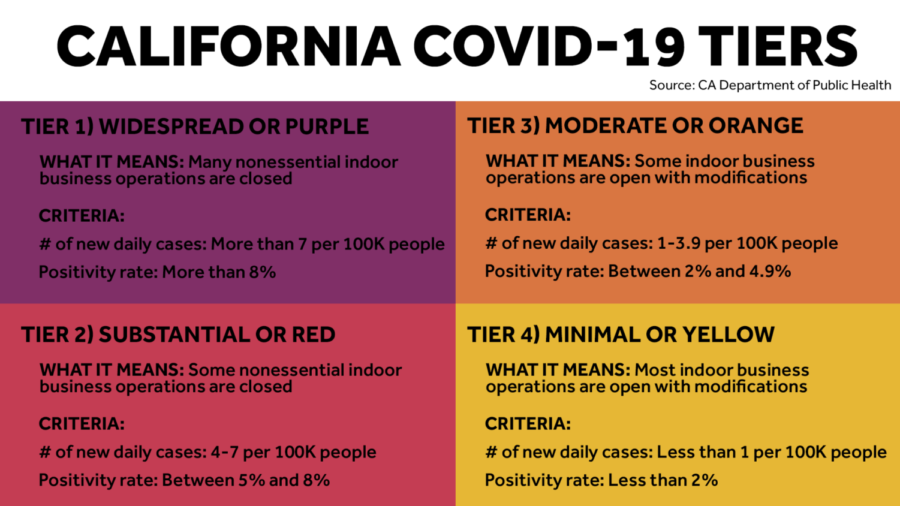2 Million Vaccines Distributed to California’s Hard-Hit Areas
March 15, 2021
The state of California created a four-tier reopening plan that classifies each county in the state by its number of COVID-19 cases and how much the county will be allowed to reopen.
The County of Los Angeles (LA) is currently in Tier 2, otherwise known as the red tier. In this tier, according to the Los Angeles Times, the risk of getting infected with COVID-19 is “substantial” and some nonessential indoor businesses should remain closed. Many other counties are in Tier 1, also known as the purple tier.
Despite this, California has met its initial goal for the administration of COVID-19 vaccines, especially in areas that have been hardest hit and are at a greater disadvantage.
The administration of the vaccines shows that California’s effort to distribute the vaccine is opening doors for greater economic reopening, especially as it does so throughout the state and in hard-hit areas.
2 million doses have been distributed and administered in targeted communities throughout the state. This has helped to open doors for businesses as officials have begun to loosen the criteria for counties to advance from Tier 1 to Tier 2.
“California is making good strides on achieving the commitment to delivering doses to the hardest-hit communities across our state, making sure that our first line of protection is going to those places that have shouldered the greatest burden of disease,” said Dr. Mark Ghaly, California’s health and human services secretary during a briefing.
According to the California Department of Public Health, 13 counties advanced to the red tier on Mar. 14. The 13 counties include Los Angeles, Orange, and San Bernardino counties. A different set of 13 counties like San Diego, Sacramento, and Santa Barbara will leave the purple tier as soon as their COVID-19 figures remain steady, which, for some, could be as early as Mar. 17.
According to the L.A. Times, counties in the red tier will be permitted to resume and reopen many nonessential services. Restaurants will be allowed to restart indoor dining and movie theater showings can resume at a 25% capacity. Additionally, students grades 7 through 12 will be allowed to return to school in person; indoor gyms, dance, and yoga studios can reopen at a 10% capacity; attractions like museums, zoos, and aquariums will reopen indoors at a 25% capacity. Many of California’s amusement parks will be allowed to reopen at 15% capacity starting on Apr. 1. However, only in-state residents will be permitted to visit.
As more vaccines are administered, the state will gain a larger sense of herd immunity. Nonetheless, as the number of COVID-19 cases continues to fluctuate, the counties of California will continue to adjust and adapt.
“As part of the new targeted strategy, the state set goals of administering the first 2 million doses in those areas, then 4 million. After reaching each mark, California aims to redraft its reopening road map to make it easier for counties to more widely resume economic operations,” reported the L.A. Times.
Photo courtesy of KCRA.COM

